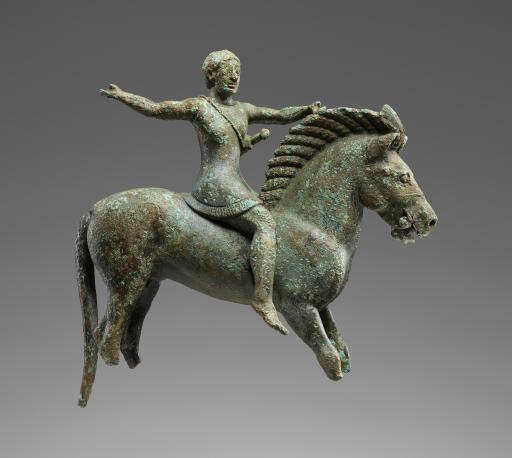Press conference on the special presentation “The Equestrian figure of Babunja” on May 13, 2025, at 10.30 a.m. in the lecture hall of the NHM Vienna
Admission: from 10 a.m. via the main entrance on Maria-Theresien-Platz
On the podium are:
Katrin’s VohlandDirector General and Scientific Director, NHM Vienna
Fate Velaj, Ambassador of the Republic of Albania in Austria
Adem Bunguri, Albanian Academy of Sciences, Institute of Archeology
Bashkim Lahi, Albanian Academy of Sciences, Institute of Archeology
Karina Grömer, Director of the prehistoric department, NHM Vienna
Georg Tiefengraber, Research staff of the prehistoric department, NHM Vienna
“The special presentation presented from May to July 2025 in the Natural History Museum in Vienna “Babunja’s riding figure” is another milestone in the cooperation between Albania and Austria for over a hundred years in the field of culture and research “Katrin Vohland, General Director and Scientific Managing Director of the NHM Vienna is happy.
Since the pioneering work on archeology in Albania by Camilo Praschniker and Arnold Schober, who was still fundamental in 1919, numerous joint archaeological and cultural projects, such as exhibitions and excavations, have been realized.
The current special presentation in the gold cabinet of the NHM Vienna fits seamlessly into the long -term cooperation. “We are proud that one of the most outstanding archaeological finds of the past ten years in Albania can be shown for the first time after an expert restoration in the Getty Museum (USA) outside of Albania in the NHM Vienna:” Babunja’s riding figure “.
“Babunja’s riding figure – or even” the rider? “
This object is an outstanding bronze statuette of a once armed rider on a horse. The separately worked helmet that is missing to the litter lance and the shield. The artwork was discovered in an ancient boiling near Babunja near the ancient city of Apollonia in Illyria, in today’s Albania, in the course of the Albanian-German research excavations 2018. It was in a Greek workshop in the late archaic period around 510-490 BC. BC made and is a unique artistic masterpiece of Greek bronze work.
Fate Velaj, Ambassador of the Republic of Albania in Austria, at the operation of which the presentation of the figure and the scientific conference come about: “Every archaeological discovery represents an important event in scientific and social life and at the same time enriches the cultural heritage and the history of a country. But the” rider of Babunja “, which was discovered in 2018 in the small ancient Illylly Illy of Illyzynia in the village of Babunja near the ancient Apollonia as part of the Albanian-German research work, is not only a treasure for Albania, but also a great enrichment for the entire archaeological Research – both in Europe and internationally. “
Although the riding person carries weapons, due to the stylistic (iconographic) peculiarities of archaic, it is not clear whether it is a rider or maybe even a rider.
The bronze statuette may have been sacrificed in a sanctuary as a consecration of one or a relative of the locals of the locals of the Illy of Illyrian elite. In any case, the work of art shows that the Illyrian elite estimated precious Greek import work and dealt with Greek art, lifestyle and Greek intellectual life. The outstanding statuette offers a good opportunity to show the interaction of the Greek poleis and settlements with the locals and in particular the rulers.
International symposium in the NHM Vienna
As part of the special presentation, an international conference on the subject of “The Role of Elites of the 1st Millennium BC Central Europe and the Southern Balkans-with the Case Study of the“ Horse and Rider of Babunja ”will be held from May 13th to 15th, 2025.
The focus of the conference is the scientific discourse on the accompanying material culture, the prestige goods, the corresponding trade routes and communication networks between Central Europe and the Balkans in the 1st millennium BC. In order to embed this into a larger framework, theoretical concepts for social structure and identities in the 1,throlla thousand BC BC discussed. Grave finds in particular can show an impressive picture of the differentiated role of elites and their multi-layered social, political and ritual-religious functions, but also the roles of female and male elite members based on their grave goods.
With the request for registration (only with a promise) for the press conference at: presse@nhm.ac.at
Press material for download: https://www.nhm.at/presse/pressemitteilungen2025/einladungreiter
